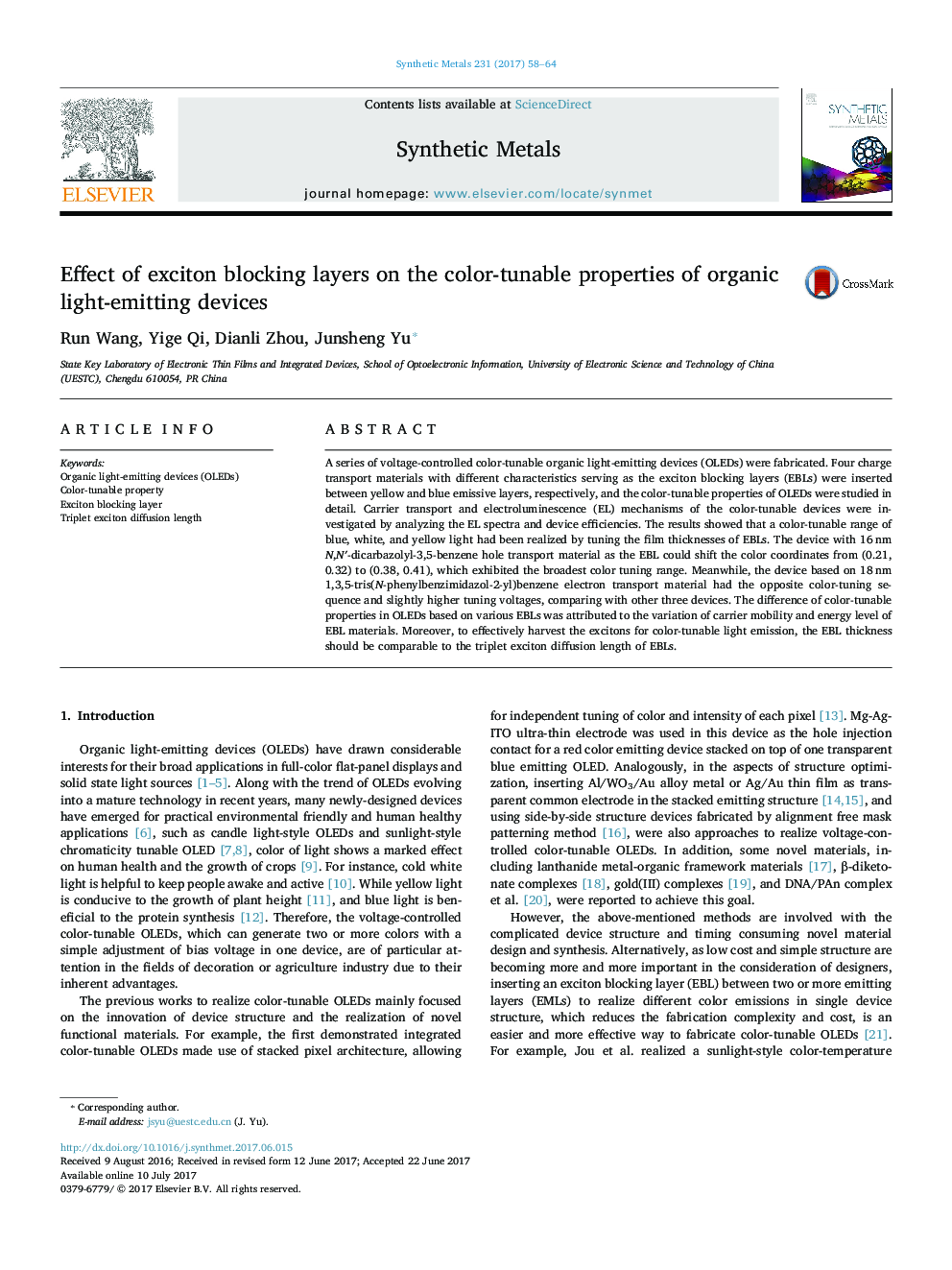| Article ID | Journal | Published Year | Pages | File Type |
|---|---|---|---|---|
| 5435364 | Synthetic Metals | 2017 | 7 Pages |
â¢High-performance color-tunable OLEDs controlled by bias voltage were fabricated.â¢Effect of four different transport materials as exciton blocking layers on color-tunable property was systematically studied.â¢Exciton blocking layer film thickness should be comparable to triplet exciton diffusion length to realize the color-tunable OLEDs.
A series of voltage-controlled color-tunable organic light-emitting devices (OLEDs) were fabricated. Four charge transport materials with different characteristics serving as the exciton blocking layers (EBLs) were inserted between yellow and blue emissive layers, respectively, and the color-tunable properties of OLEDs were studied in detail. Carrier transport and electroluminescence (EL) mechanisms of the color-tunable devices were investigated by analyzing the EL spectra and device efficiencies. The results showed that a color-tunable range of blue, white, and yellow light had been realized by tuning the film thicknesses of EBLs. The device with 16Â nm N,Nâ²-dicarbazolyl-3,5-benzene hole transport material as the EBL could shift the color coordinates from (0.21, 0.32) to (0.38, 0.41), which exhibited the broadest color tuning range. Meanwhile, the device based on 18Â nm 1,3,5-tris(N-phenylbenzimidazol-2-yl)benzene electron transport material had the opposite color-tuning sequence and slightly higher tuning voltages, comparing with other three devices. The difference of color-tunable properties in OLEDs based on various EBLs was attributed to the variation of carrier mobility and energy level of EBL materials. Moreover, to effectively harvest the excitons for color-tunable light emission, the EBL thickness should be comparable to the triplet exciton diffusion length of EBLs.
